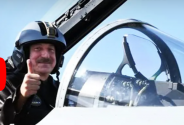Because in
legal terms J-10 is a Chinese plane and JF-17 is a
Pakistani plane.
It doesn't matter that the construction is developed jointly or that it is derived from a Chinese aircraft and that most critical sub-systems are Chinese. Pakistan has the rights to JF-17 and does the final assembly and legally can replace any element in the plane and sell it to anyone it chooses. This means that if for whatever reason Azerbaijan didn't want Chinese components in their aircraft Pakistan can provide them with alternatives. That also includes weapons from countries other than China e.g. Turkey.
This is important because this purchase has nothing to do with China, and everything to do with Turkey and its relationship with Azerbaijan and Pakistan.
Turkey has very close relationship with Pakistan and cooperates with it militarily. But while Pakistan is a close ally of China, Turkey is still in NATO and so far nothing indicates that it plans to leave the alliance - the reasons being Russia but also the conflict over Cyprus with Greece.
Turkey has similarly close relationship with Azerbaijan and is also the de facto guarantor of Azerbaijan's security. This is important - since the 2000s relationship with Turkey, and not Russia (despite formal participation in CSTO), has become the foundation of Azerbaijan's foreign and defense policy and this relationship is only going to grow closer in the future. Turkey is expanding its influence in Central Asia among the Turkic nations (Kazakhstan, Turkmenistan, Uzbekistan etc) and Azerbaijan is a necessary stepping stone enabling Turkey to reach across the Caspian Sea. The biggest challenges for Turkey's expansion into Central Asia is the geography of the region which benefits air power most of all. This means that if Turkey wants to expand its influence, including in the area of security, it must reduce dependency on Russian aerospace technology among the Central Asian states. There is no better tool for that than JF-17 because it's cheap, multirole fighter that can integrate modern Chinese systems. This means that JF-17 with AESA radar will give hard time to any Russian fighter other than Su-57, which will be overwhelming majority of Russian air force in the coming 1-2 decades.
More here - several posts expanding on my hypothestis. They are long but I think they are well worth the read:
@Stealthflanker Here's a recent, very informative thread from one of the most prominent Turkish journalists on MURAD GaN FCR and F-16 Özgür avionic mod. Wonder your thoughts about the given infos. It's unfortunately in Turkish but you should have no problem auto-translating it. AKINCI SİHA...
www.sinodefenceforum.com
What I described is a strategic longshot which focuses on ambitions and possibilities more than likely results, but I think it very well explains what we're seeing in Central Asia (or actually not seeing, since the region is largely forgotten by discourse). All the more relevant because of Russia's sudden weakening as consequence of war in Ukraine which will only speed up the process.
Also with JF-17 (almost) everyone wins which makes deals which are highly contingent on political suport easier to pass.
- Azerbaijan gets modern multirole aircraft which can replace old MiG-29s and Su-25s.
- Turkey ensures that its junior partner has capable air force not dependent on Russian technology where it matters most in combat - electronics and weapons.
- Pakistan gains an export customer which will improve reception of its product and potentially open markets in other Central Asian countries.
- China gets the reduction of Russian influence in Central Asia.
Russia is the clear loser in comparison to being the sole supplier of entire system but Azerbaijan can soften that by ordering Russian engines, which are the natural choices as they are already familiar to its air force because RD-93 is developed from RD-33 used in MiG-29.
And if this deal turns out to be successful, which it has no reason not to, then it could naturally lead to:
Current inventory by Wiki:
- Kazakhstan - 14x MiG-29, 14x Su-25, 24x Su-27, 43x Su-30, 31xMiG-31
- Uzbekistan - 38x MiG-29, 13x Su-25, 25x Su-27
- Turkmenistan - 24x MiG29, 25x Su-25
Most of those will have to be replaced soon and there aren't many affordable and fexible options on the market. Even 24-36 JF-17 per each country (72-102 total) would be a significant export success for PAC and there's potential for more provided stable financing can be arranged which can be done considering that a significant chunk of the aircraft is Chinese. The future market for JF-17 may be in Central Asia.

